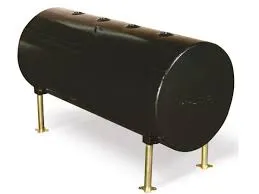Dec . 19, 2024 10:39 Back to list
electro hydraulic cylinder factory
Understanding Electro-Hydraulic Cylinder Factories Innovation and Efficiency in Motion
In the contemporary industrial landscape, electro-hydraulic cylinders represent a pivotal technology driving innovation and efficiency across myriad sectors. These powerful devices combine the benefits of hydraulic systems with advanced electrical controls, making them a popular choice in manufacturing, construction, automotive, and robotics industries. This article aims to delve into the intricacies of electro-hydraulic cylinder factories, highlighting their significance, manufacturing processes, and future prospects.
What are Electro-Hydraulic Cylinders?
Electro-hydraulic cylinders are actuators that utilize hydraulic fluid under pressure to produce linear motion, which is precisely controlled by an electric motor. This hybridization of technologies allows for more efficient energy usage, enhanced precision, and improved control compared to traditional hydraulic systems. The primary components of these cylinders include a hydraulic cylinder, an electric motor (often combined with a servo drive), and control electronics that facilitate real-time adjustments based on operational demands.
The Manufacturing Process
The production of electro-hydraulic cylinders is a complex process that requires a blend of advanced engineering, precision machining, and rigorous quality control. Factories specializing in these cylinders typically follow several key steps
1. Design and Simulation Before manufacturing begins, engineers develop detailed designs using computer-aided design (CAD) software. Advanced simulation tools help predict how the cylinders will perform under various conditions, allowing for optimization before physical prototypes are created.
2. Material Selection The materials used in electro-hydraulic cylinder production must meet specific performance criteria. High-strength alloys and wear-resistant materials are often selected to ensure durability under high pressure and heavy loads.
3. Precision Machining Once materials are obtained, precision machining processes are employed to manufacture individual components such as the cylinder tubes, end caps, and piston rods. CNC (Computer Numerical Control) machines are commonly used to carry out these tasks with high accuracy, reducing waste and production time.
4. Assembly After all components are machined, they are carefully assembled. This stage involves the installation of seals, mounting of the electric motor, and integration of electronic control systems. Precision during assembly is crucial to ensure the reliability and functionality of the final product.
electro hydraulic cylinder factory

5. Testing and Quality Assurance Rigorous testing is conducted to ensure that the electro-hydraulic cylinders meet industry standards. This may involve pressure testing, performance evaluations, and durability assessments. Quality assurance teams play a critical role in identifying any potential defects before the products reach the market.
Applications and Industries
Electro-hydraulic cylinders find applications across various industries due to their versatility and performance. In the construction industry, they are employed in cranes and other heavy machinery to facilitate lifting and positioning of large loads. In automotive manufacturing, these cylinders assist in automation processes, ensuring precision assembly of components.
Similarly, robotics is another sector benefiting significantly from electro-hydraulic technology. These cylinders provide the necessary power and movement needed for tasks ranging from industrial automation to advanced robotic surgeries in the medical field. Their ability to provide precise movement with high force output makes them indispensable in modern robotics applications.
Future Trends
The future of electro-hydraulic cylinder factories looks bright, largely driven by advancements in technology and changes in industry demands. The integration of artificial intelligence (AI) and the Internet of Things (IoT) is set to revolutionize the way these systems are designed and operated. Smart electro-hydraulic cylinders equipped with sensors can provide real-time data, enabling predictive maintenance and enhancing overall operational efficiency.
Moreover, as industries increasingly focus on sustainability, the demand for energy-efficient solutions will continue to rise. Electro-hydraulic systems offer a promising route toward achieving these goals, as they can significantly reduce energy consumption compared to traditional hydraulic systems.
Conclusion
Electro-hydraulic cylinder factories embody a critical intersection of innovation and efficiency in the modern industrial world. Through meticulous design, advanced manufacturing processes, and stringent quality control, these factories produce components that are vital for the functionality of machinery across various sectors. As technology evolves, the importance of electro-hydraulic cylinders is expected to grow, paving the way for more efficient and intelligent industrial operations.
-
High-Precision [90/105-50-180-480] Industrial Component | Durable & Reliable
NewsAug.27,2025
-
High-Performance Set of 50/60-45-290 471 | Durable & Reliable Components
NewsAug.26,2025
-
Efficient Pallet Truck Power Units - Reliable Hydraulic Systems
NewsAug.25,2025
-
Premium Set of 50/60-45-290 471 Parts | High Performance
NewsAug.24,2025
-
Efficient & Reliable Double Acting Power Unit | Hydraulic Solutions
NewsAug.23,2025
-
1.5 Ton Turbocharged Cylinder 80/95-40/60-35-124 | High Performance
NewsAug.22,2025
